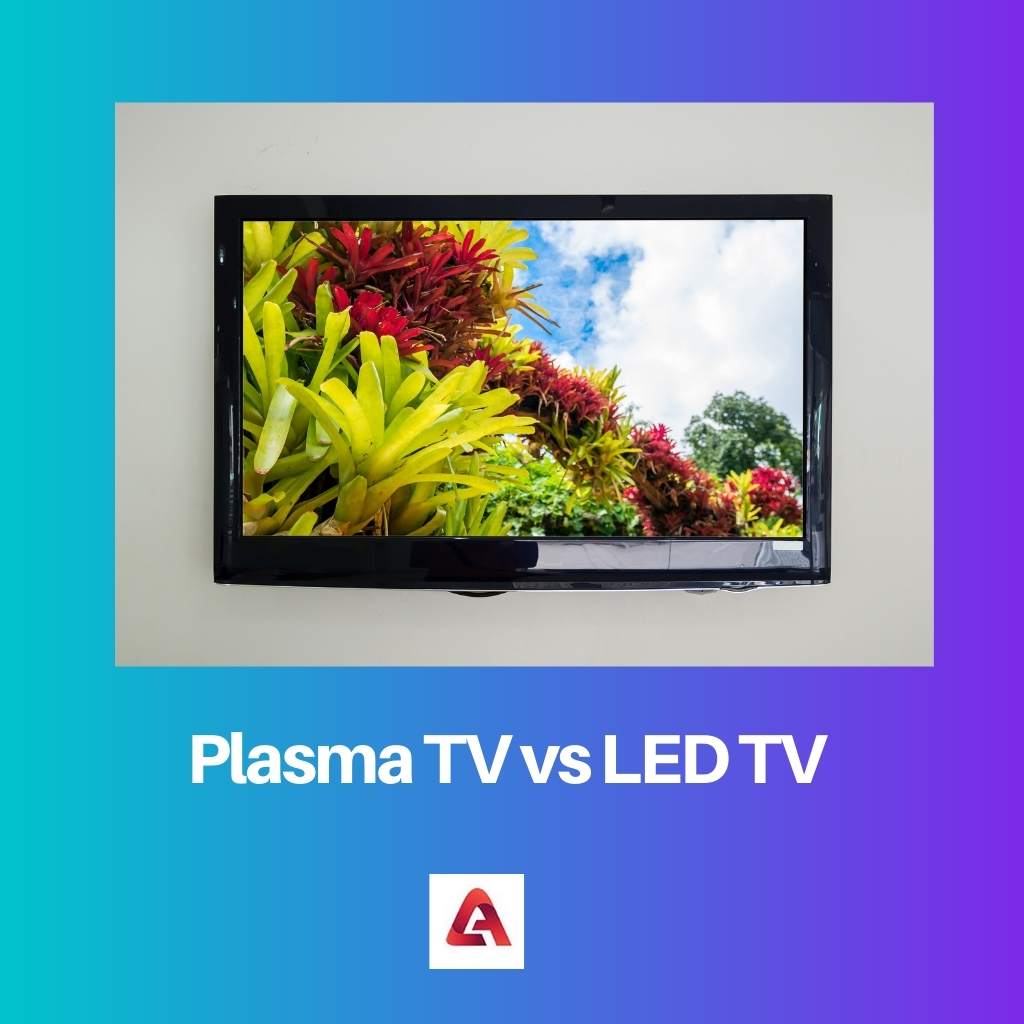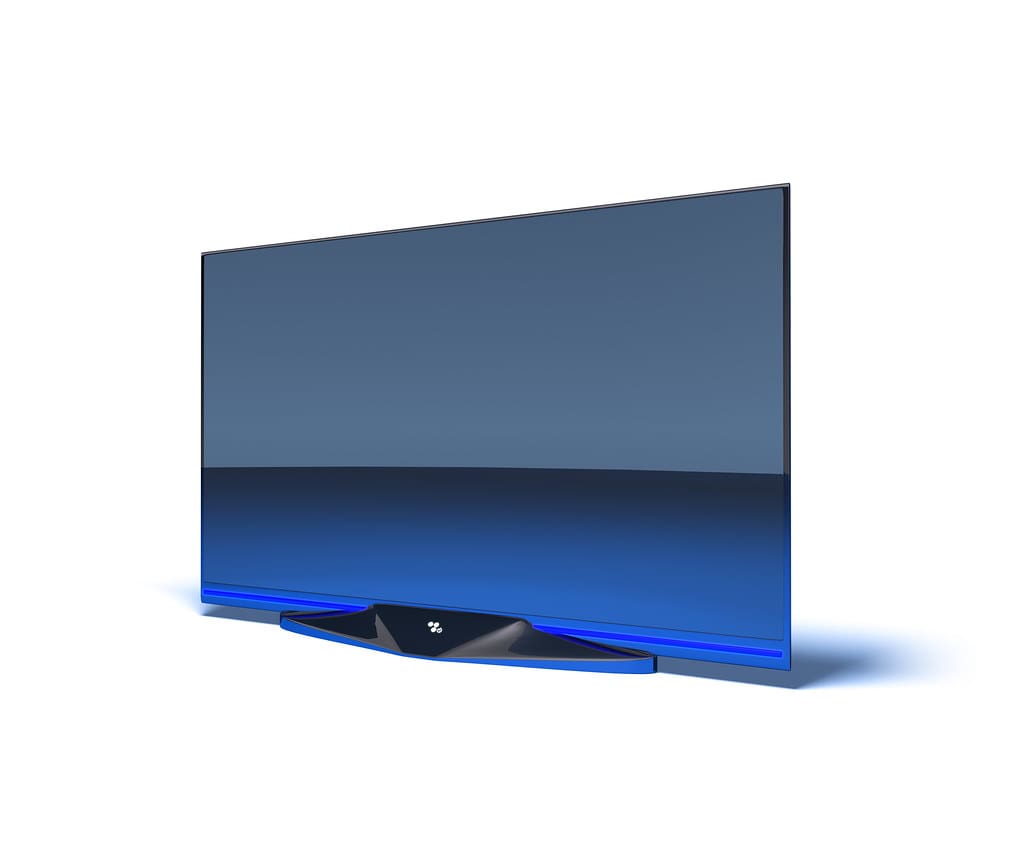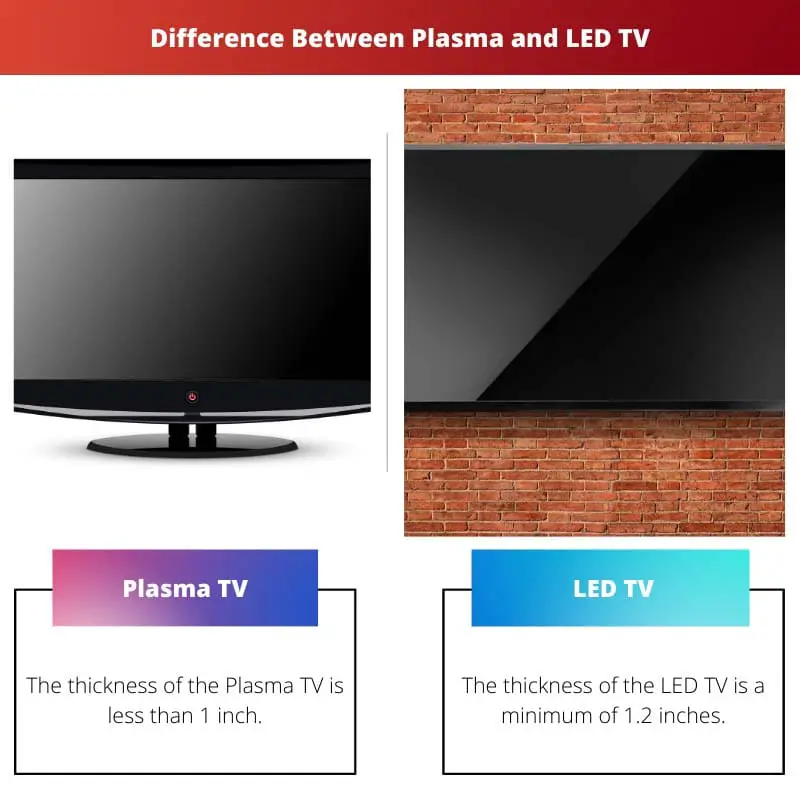Now having a television in a home is not that expensive. A distinct type of television is present in the market according to the customers’ requirements. From cheaper to high-quality, everything is available.
Recently, LCD, LED, and Plasma TVs are popular in the market as they have good picture quality, a high-resolution screens, sound quality, etc. They came in different sizes and with different power consumption.
Key Takeaways
- Plasma TV uses plasma cells to create images by lighting small gas pockets with an electrical current.
- LED TV uses an LED backlight to illuminate the liquid crystal display (LCD) to create an image.
- Plasma TVs have better color accuracy, contrast, and viewing angles, while LED TVs are more energy-efficient and have a longer lifespan.
Plasma TV vs LED TV
Plasma TV is a type of display that uses small cells containing plasma or electrically charged ionized gases to create images. They are an affordable option but consume high power. LED TV is a television display that uses a backlight comprising of light-emitting diodes (LED) to create images. It is a costly option that consumes less power.

A plasma TV is a television display where the screen of the TV is illuminated by the use of gas diodes or cells present at the back of the screen. These gas cells (plasma cells) are light up when electricity is passed through them. They consume more power and are cheaper.
LED TV is a television set that uses light-emitting diodes (LED) as the source of the backlight of the screen. They are small and consume 70% less power compared to Plasma TVs. They come in various screen sizes, and so is their varied cost in the market.
Comparison Table
| Parameters of Comparison | Plasma TV | LED TV |
|---|---|---|
| Thickness | The thickness of the Plasma TV is less than 1 inch. | The thickness of the LED TV is a minimum of 1.2 inches. |
| Power Consumption | Consumes more power | Consumes less than 70% power |
| Screen Size | Above 42 inches | Above 90 inches |
| Life Span | The life span of the Plasma TV is around 20,000-60,000 hours. | The life span for the LED TV is around 100,000 hours. |
| Cost | Cheaper | Varies from $100 – $ 25000 |
| View Angle | The color and the brightness of the screen changes with the viewing angle. | The angle is the same throughout the screen. |
| Screen Thickness | Thick | Quite Thin |
| Backlight | Absent | Present |
What is Plasma TV?
Plasma TV is referred to as the television model, which uses plasma gas as the backlight source to help in displaying images on the screen. Some of the manufacturers of Plasma TVs are – Panasonic, LG, and Samsung.
Below are the steps of how a Plasma TV works although the working of the Plasma TV is based on fluorescent light bulbs –
- The display of the Plasma TV consists of cells.
- Every individual cell consists of the insulating layer, address anode, display cathode, and is separated by two glass panels. In between the glass panels, neon-xenon gases are filled, which are then sealed in the form of plasma while manufacturing the unit.
- While in use, the electric current charges gas at regular intervals, which further strikes on the red, blue, and green phosphorus, which helps to create images on the screen.
- The group of red, green, and blue phosphors is known as pixels.

What is LED TV?
LED TVs are said to be the television model which uses light-emitting diodes as a backlighting source to create images rather than using CFLs as the external backlighting source. Some of the companies manufacturing LED TVs are – LG, Philips, Panasonic, Kogan, ProScan, etc.
Below are the steps of how an LCD TV works –
- In an LCD panel, two transparent, polarized layers are present, which are glued together.
- On one of the layers, liquid crystal coating is present, which is held by the application of a special polymer.
- From these crystals, electric current is passed through, which allows it to pass or block the light to create the images.
- The LCD crystals in the TV panel do not produce light; therefore, an additional backlighting source must be used, which can be CFL/HCFL or Light-emitting diode (LEDs). These external light source helps to create an image, and the picture is viewed on the screen.

Main Differences Between Plasma and LED TV
- The thickness of a Plasma TV is said to be about less than 1 inch, while the thickness of an LCD TV is about 1.2 inches or more than that.
- A plasma TV consumes more power, whereas an LCD TV uses about 70% of the less powerful.
- The size of the Plasma TV screen is said to be above 42 inches, whereas the size of the LCD TV screen is above 90 inches.
- Plasma TV is supposed to have a short life span of about 20,000 hours – 60,000 hours, whereas the life span of the LCD TV is believed to be longer than the plasma tv it is about 100,000 hours.
- Plasma TV is much cheaper, whereas an LCD TV costs between $100 – $25000 in the market.
- The brightness or color of the screen of a Plasma TV changes with the position of the viewer, whereas the color and the brightness of the screen of LCD remain the same throughout every view angle of the viewer.
- The screen of a Plasma TV is said to be thicker, whereas the screen of an LCD TV is thinner.
- Plasma TV sometimes does not have any backlight screen source, while LCD TVs use a light-emitting diode (LCD) as their backlight source.

References
- https://onlinelibrary.wiley.com/doi/abs/10.1002/j.2637-496X.2011.tb00444.x
- https://www.karger.com/Article/Abstract/318265
- https://link.springer.com/article/10.1007%2Fs11747-012-0305-6

The detailed analysis of Plasma and LED TVs is well-presented. The article does a great job of outlining the differences in a clear and concise manner.
Absolutely, this article is a valuable source of information for anyone interested in understanding the nuances of Plasma and LED TVs.
I appreciate the thoroughness of the comparison. It really helps in understanding the technical disparities between these television technologies.
The detailed analysis of Plasma and LED TVs is well-presented. The article does a great job of outlining the differences in a clear and concise manner.
The article does a great job at explaining the technical aspects of Plasma and LED TVs. It’s an excellent resource for anyone looking to understand the differences between these two types of televisions.
I couldn’t agree more. It’s a very thorough and comprehensive comparison.
The breakdown of the parameters for comparison is particularly useful for consumers to consider when making a purchase decision.
This article provides an in-depth comparison between Plasma and LED TVs, and it’s very informative. I appreciate the detailed explanation of how both types of TVs work and the specifications. It really helps in making an informed decision when purchasing a TV.
The article’s detailed comparison of Plasma and LED TVs is very thorough. It’s an excellent resource for anyone looking to understand the differences between these two types of televisions.
The article provides a comprehensive analysis of Plasma and LED TVs, and it’s very educational. The detailed explanation of how each type of TV works is very enlightening.
Absolutely, the breakdown of the parameters for comparison is particularly useful for consumers to consider when making a purchase decision.
I find the comparison between Plasma and LED TVs very helpful in understanding the key differences between the two. It’s very well-written and provides valuable insights.
Absolutely, the detailed information about the working of both TVs is enlightening.
I agree, the article is well-researched and presents the information clearly.
This article is a valuable source of information for anyone interested in understanding the nuances of Plasma and LED TVs. The detailed analysis of Plasma and LED TVs is well-presented.
Absolutely, the article does a great job at explaining the technical aspects of Plasma and LED TVs. It’s an excellent resource for anyone looking to understand the differences between these two types of televisions.
I find the comparison between Plasma and LED TVs very helpful in understanding the key differences between the two. It’s very well-written and provides valuable insights.
The article does a great job of explaining the technical aspects of Plasma and LED TVs. It’s very insightful and informative.
The article provides a comprehensive analysis of Plasma and LED TVs, and it’s very educational. The detailed explanation of how each type of TV works is very enlightening.
It’s great to see such a detailed comparison that can help consumers make an informed decision about their TV purchase.
I completely agree. The technical breakdown of these TV technologies is very informative.
This article provides an in-depth comparison between Plasma and LED TVs, and it’s very informative. I appreciate the detailed explanation of how both types of TVs work and the specifications. It really helps in making an informed decision when purchasing a TV.
I totally agree. The article really lays out all the important information needed to decide between these two types of TVs.
Great breakdown of the differences between Plasma and LED TVs. The detailed comparison table is especially helpful.